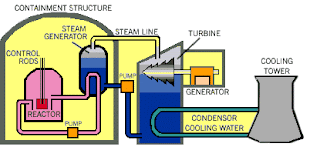THE ASSIGNMENT
Beginning with the information below, your team's task is to talk about the various forms of Energy, Energy sources, types of Energy, and the advantages and disadvantages of each type of energy. YOU NEED SEVEN (7) SPEAKERS, to talk about the following topics:
- Energy
- Forms of Energy (Click on the link in this article that says "Forms of Energy")
- Energy Sources
- Pros and Cons
- Advantages and Disadvantages
- Advantages and Disadvantages 2
- Advantages and Disadvantages 3
READ THIS FIRST! Click here
Energy
Energy is the vital force powering business, manufacturing, and the transportation of goods and services to serve the world economies. Energy supply and demand plays an increasingly vital role in our national security and the economic output of our nation. It is not surprising that the United States spends over 500 billion dollars annually on energy
Energy comes in different forms -- heat (thermal), light (radiant), mechanical, electrical, chemical, and nuclear energy. Energy is in everything. We use energy to do everything we do, from making a jump shot to baking our favorite cookies to sending astronauts into space -- energy is there, making sure we have the power to do it all. There are two types of energy -- stored (potential) energy and working (kinetic) energy. For example, the food you eat contains chemical energy, and your body stores this energy until you release it when you work or play. Learn more about these different forms of energy.
All forms of energy are stored in different ways, in the energy sources that we use every day. These sources are divided into two groups -- renewable (an energy source that can be replenished in a short period of time) and nonrenewable (an energy source that we are using up and cannot recreate in a short period of time). Renewable and nonrenewable energy sources can be used to produce secondary energy sources including electricity and hydrogen.
Renewable energy sources include solar energy, which comes from the sun and can be turned into electricity and heat. Wind, geothermal energy from inside the earth, biomass from plants, and hydropower and ocean energy from water are also renewable energy sources.
However, we get most of our energy from nonrenewable energy sources, which include the fossil fuels -- oil, natural gas, and coal. They're called fossil fuels because they were formed over millions and millions of years by the action of heat from the Earth's core and pressure from rock and soil on the remains (or "fossils") of dead plants and animals. Another nonrenewable energy source is the element uranium,铀 [yóu] whose atoms we split (through a process called nuclear fission原子核反应堆 [yuánzǐhéfǎnyìngduī] ) to create heat and ultimately electricity.
We use all these energy sources to generate the electricity we need for our homes, businesses, schools, and factories. Electricity "energizes" our computers, lights, refrigerators, washing machines, and air conditioners, to name only a few uses. We use energy to run our cars and trucks. Both the gasoline used in our cars, and the diesel fuel used in our trucks are made from oil. The propane that fuels our outdoor grills and makes hot air balloons soar is made from oil and natural gas.




